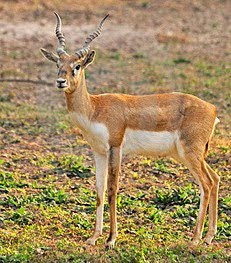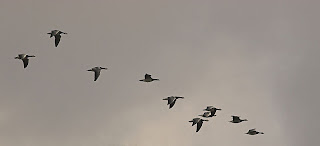Sunday article by Mohan Pai
Hello friends,
Good morning. This sunday's article is about the Hanuman langur, a very bold and rowdy primate.
Hanuman langur is associated with Lord Hanuman of Ramayana and is revered by the Hindus, it is seldom molested and they have lost all fear of man. It's also known as the temple monkey. Considered as a single species earlier, 7 distinct subspecies are now recognised in India. Hanuman langur is widely distributed over the subcontinent.
Very best wishes,
Mohan Pai.
Hanuman Langur
Semnopithecus
One of the rowdiest primates, even the Indian Parliament is not out of bounds for them.
Hanuman Langur is believed to be one of the Old World monkeys, belonging to the Semnopithecus Genus. They comprise of 15 subspecies and are terrestrial in nature. Earlier, hanuman langurs were believed to comprise of a single species. However, now they are recognized as seven distinct species. Hanuman langur is also known by the name of Gray Langur, Entellus Langur and Common Indian Langur. Venerated by the Hindus and seldom molested, they have lost all fear of man.
This is the long-limbed, long-tailed, black-faced monkey, seen as much about towns and villages as in forests of India. Animals from the Himalayas are more heavily whiskered and coated, their pale almost white heads, standing out in sharp contrast to the darker colour of the body. The contrast is much less apparent in peninsular animals. Langurs living in the rain-swept hill regions of the Western Ghats are generally darker then those from the drier eastern zone.
Species list
Nepal Gray Langur, Semnopithecus schistaceus
Kashmir Gray Langur, Semnopithecus ajax
Terai Gray Langur, Semnopithecus hector
Northern Plains Gray Langur, Semnopithecus entellus
Black-footed Gray Langur, Semnopithecus hypoleucos
Southern Plains Gray Langur, Semnopithecus dussumieri
Tufted Gray Langur, Semnopithecus priam
 In religion and mythology
In religion and mythology Hindus revere the Hanuman langur as associated with Lord Hanuman, an ardent and loyal devotee of Shri Rama an incarnations of Lord Vishnu. An army of monkeys or the vanara sena under the leadership of Hanuman was instrumental in the defeat of Ravana by Lord Rama. Other notable vanaras who feature in the epic Ramayana are Sugriva , Vali and Angada.The Hanuman langur has a black face because according to the mythology, Hanuman burnt his hands and face while trying to rescue Sita. The langurs often live in and around Hindu temples, where they are fed by devotees. The Jakhu Hanuman temple in Shimla is a famous example. It is often referred to as the ‘monkey temple' because of the countless monkeys it houses.
Bold & rowdy
This is the one of the rowdiest relatives of mankind, at least in India. Hanuman langurs are experts at depriving you of your food. and those living near temples are particularly adept at this art. Not just temples, even the Indian Parliament is not out of bounds for them. For the past few years, the parliament has been losing a ‘few important files’, thanks to these simian creatures that react quite adversely if left unfed during the lunch hour. But when threatened, they retreat immediately.
Physical traits
The fur of the gray langur of India may be gray, dark brown or even golden in color. The face is black and the size varies from one subspecies to another. Male langurs grow to a length of 51 cm to 78 cm and weigh about 18 kg. The female langurs are smaller, with a length of 40 cm to 68 cm and weight of about 11 kg. The length of the tail is between 69 cm and 101 cm.
Diet
Common Indian langurs survive on a diet comprising of leaves, fruit, buds and flowers. The exact diet, however, changes from season to season. During winters, they survive on a diet of mature leaves. In summer season, they mainly survive on fruits. Insects, tree bark and gum also supplement their diet. Hanuman langurs can easily digest seeds with high levels of the toxins and can eat even soil and stones.
Natural habitat
Hanuman langurs are found inhabiting tropical, dry thorn scrub, pine and alpine forest as well as urban areas of the Indian subcontinent. They spent a major portion of their time on the ground, with the exception of their sleeping time. Presently, common langurs are found in India, Pakistan, Bangladesh, Sri Lanka and Burma.
Behaviour
Gray langur of India can usually be found living in large groups, dominated by a male langur. The membership of the group may be anywhere between 11 and 60. However, they hold the dominating position for a very short period only, which may stretch upto 18 months. Whenever a new male takes over the group, all the infants of the previous alpha male are killed. Entellus Langurs of India may form bachelor groups also.
Mating Behavior
Female langurs attain maturity at 3 to 4 years of age, while males achieve the same in 4 to 5 years. However, they start mating in the 6th or 7th year only. The gestation period is 190 to 210 days, after which a single infant is born. Only in very rare cases does a female langur give birth to two infants. Where there are a number of males in a group, only the high-ranking males can mate with any female. The other males get a chance to mate only if they manage to sneak by the high-ranking males.
The inveterate enemy of the Langur is the panther. The sight of one, or of a tiger that rouses suspicion produces the guttural alarm note which sends the whole troop bolting. Quite distinct is the joyous ’whoop’ emitted when bounding from tree to tree or otherwise contentedly occupied. An interesting relationship has been observed between herds of Chital deer and troops of the Northern Plains Gray Langur. Chital apparently benefit from the langur’s good eyesight and ability to post a lookout in a treetop, helping to raise the alarm when a predator approaches. For the langur’s part, the Chital's superior sense of smell would seem to assist in early predator warning, and it is common to see langurs foraging on the ground in the presence of Chital. The Chital also benefit from fruits dropped by the langurs from trees such as Terminalia bellerica. Alarm calls of either species can be indicative of the presence of a predator such as the Bengal Tiger.
Status
Common Indian langur is listed in the lower risk category by the IUCN

Pic Courtesy: Animal Diversity Web
References: S. H. Prater The book of Indian Animals), Wikipedia, Animal Diversity Web, iloveindia.com
MY BLOG LIBRARY
For some of my articles visit:


 Pic Courtesy: Animal Diversity Web
Pic Courtesy: Animal Diversity Web








